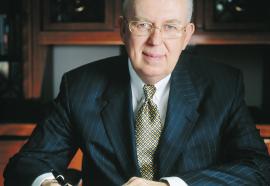Fortnightly Magazine - May 2005
A Day in the Life of Transmission Congestion
A forecast for California on Aug. 16, 2006
Gary L. Hunt and Richard Lauckhart
The Man Who Would Be King
Exelon Chairman, President, and CEO John W. Rowe, on the proposed merger that would create the largest utility in the United States.
Richard Stavros
Exelon's Epic End Game
Electric M&A: The merger with PSE&G may herald a new industry structure, squarely at odds with regional markets.
Bruce W. Radford
Capacity Markets: A Bridge to Recovery?
A review of the ongoing evolution of market design.
Craig Hart
The Bigger CIS Picture
Data Mining and Warehousing: Many utilities have no ability to turn raw customer information into significant insights about their business.
Bill Barnett
Mastering the Mastering Agreement
Special Series Part 5: How to find "commercially reasonable" valuation in power contract terminations.
Contract termination should be easy. Consult the applicable master agreement, calculate the close-out amount, and send or receive a check. If only it were so. In this discussion, we investigate the guidance offered in the key electricity master agreements regarding the calculation of settlement amounts following an event of default and subsequent termination. We also illustrate what we perceive to be a "commercially reasonable" or "good faith" approach to determining settlement amounts.
Justin Harlow and Brett Friedman
Windpower: Beyond Boom and Bust
Windpower is caught in a vicious cycle of Washington politics. Escaping the cycle will require visionary leadership in Congress and the utility industry.
Michael T. Burr
Distributed Generation: Hastening Genco Obsolescence?
DER: This final installment of Oak Ridge National Laboratory's series on distributed energy resources investigates efficiency, the environment, and generation displacement.
S. W. Hadley, T. K. Stovall
Fulfilling the Value Proposition
The Next M&A Wave: If mergers are once again a potential strategy for accomplishing growth objectives, the previous round of transactions offer several lessons.
Tom Flaherty and Bill Kemp











